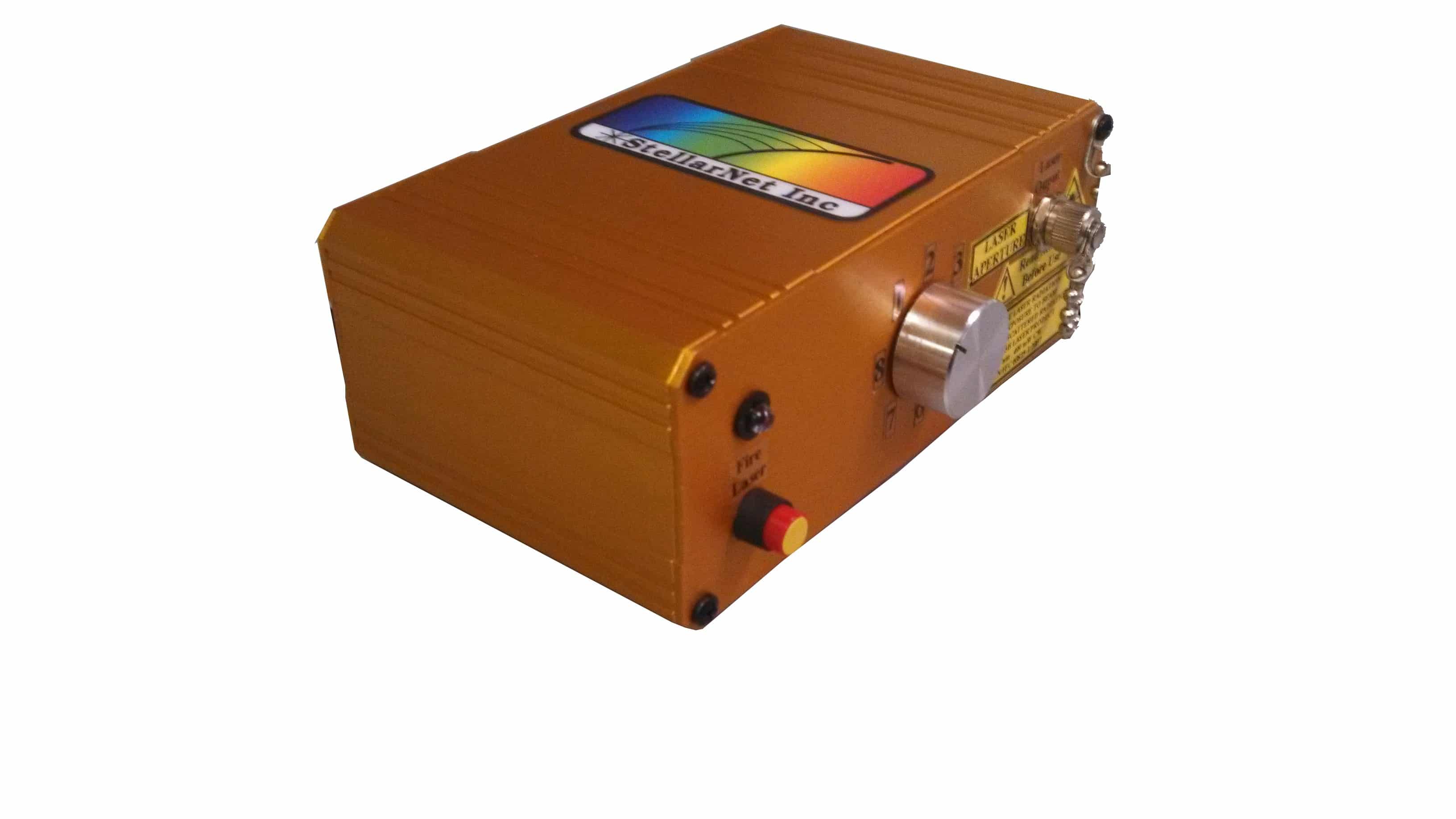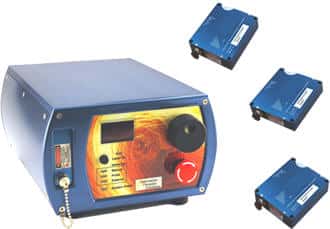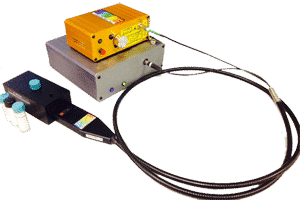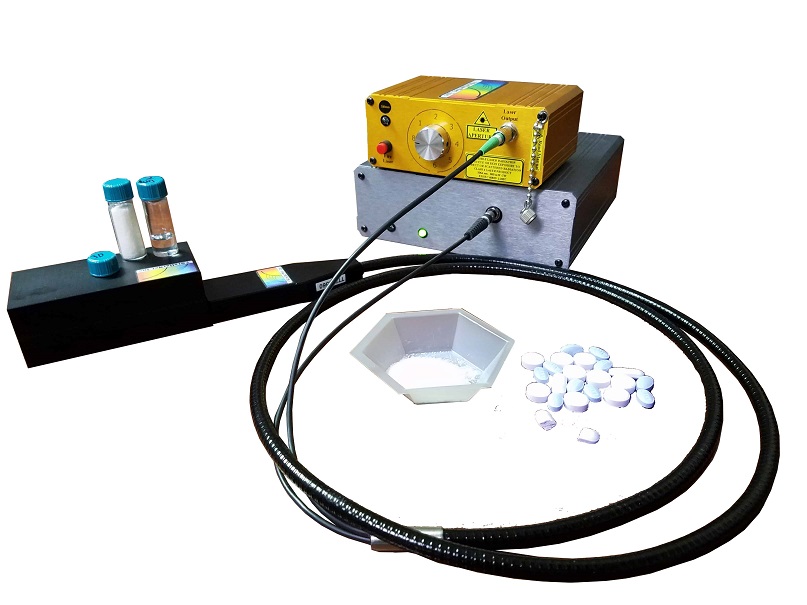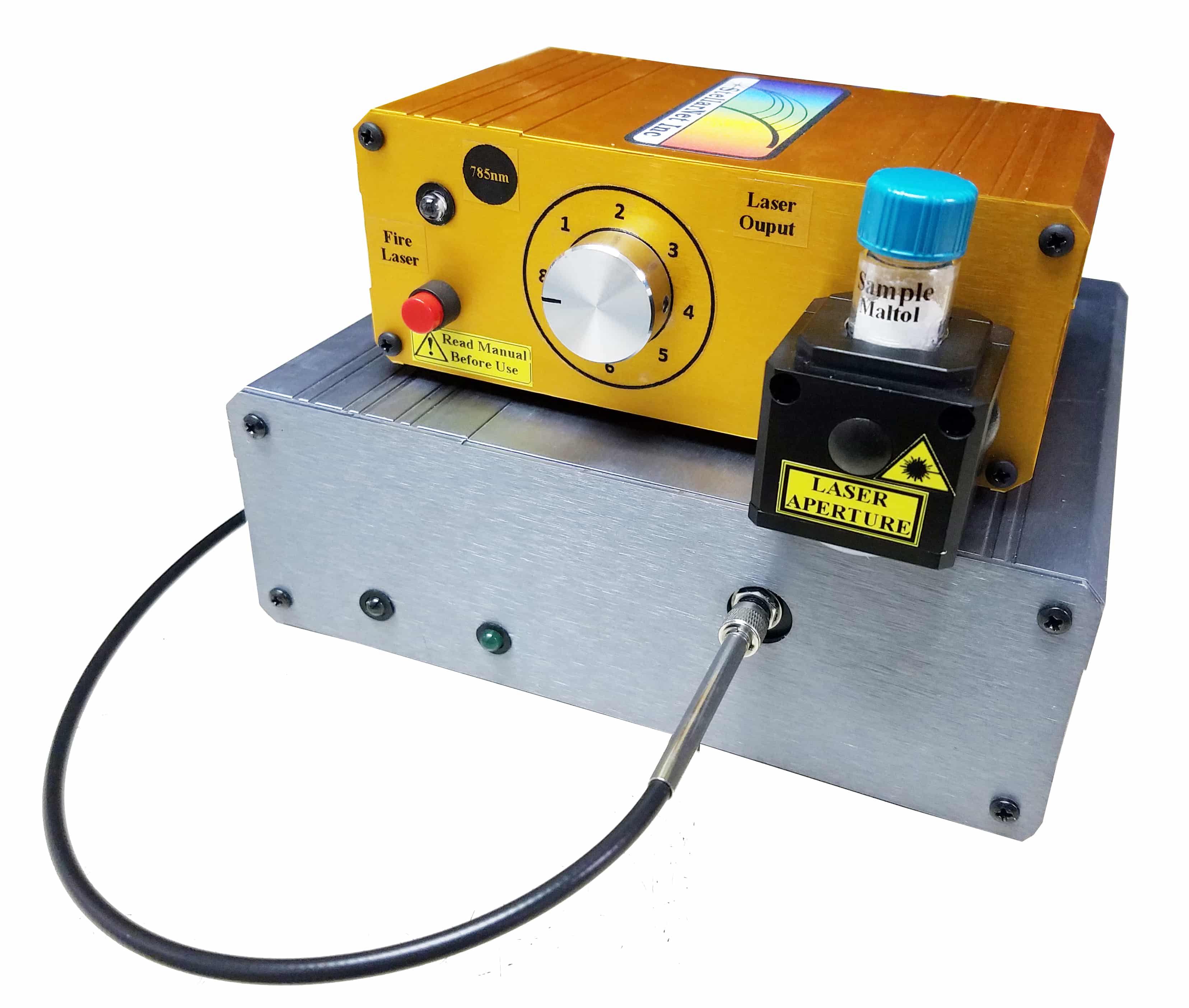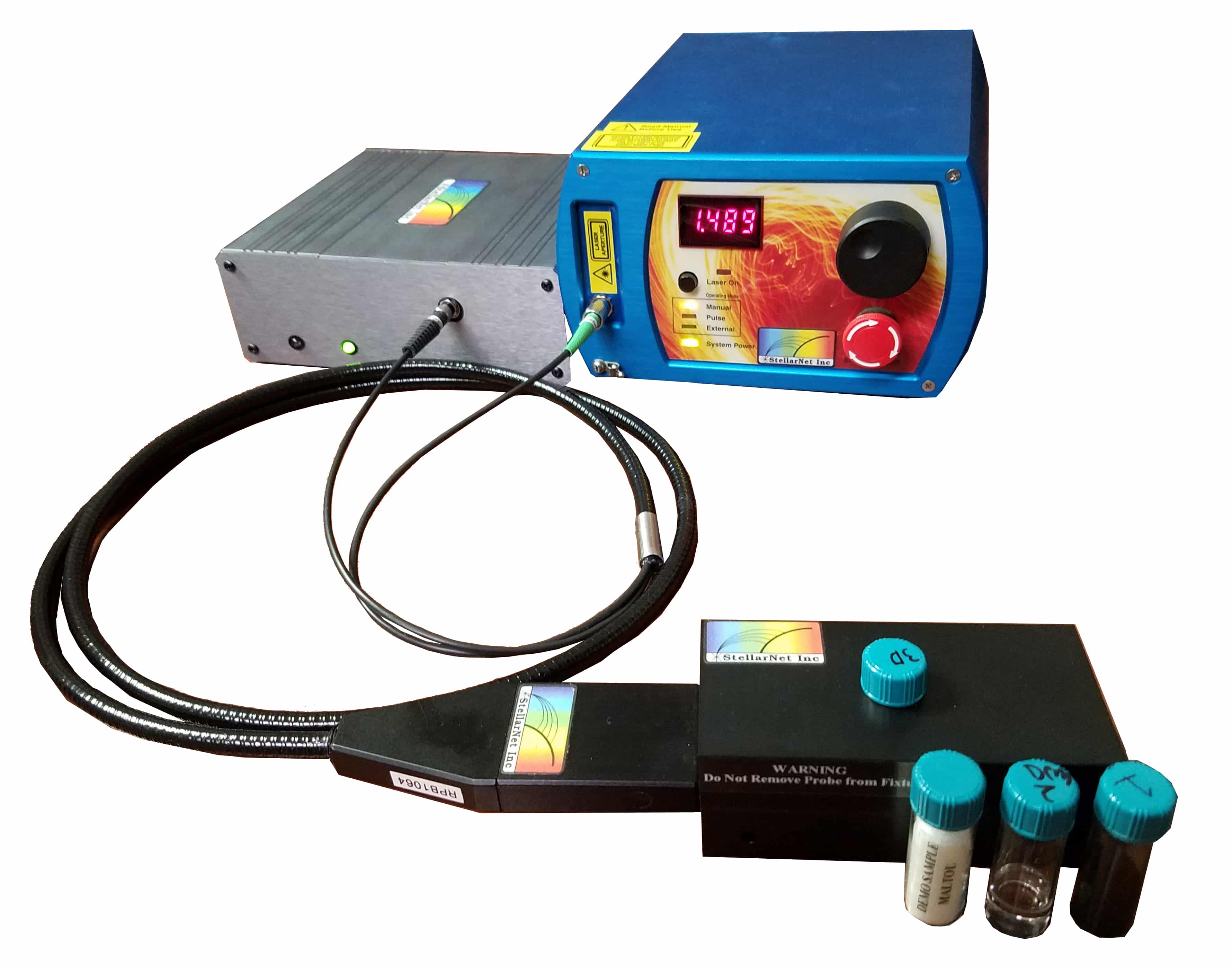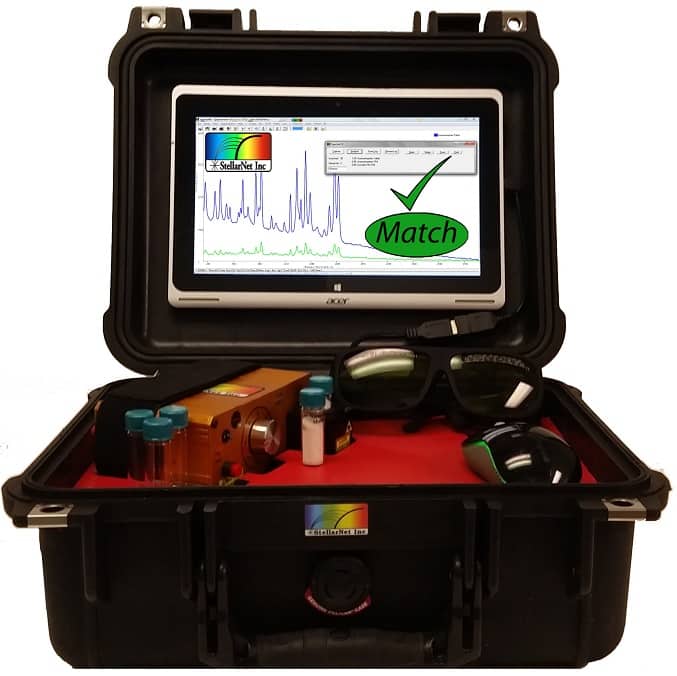
StellarNet offers a variety of modular lasers for Raman spectroscopy at 405, 532, 638, 647, 785, 1064nm and other custom wavelengths. These lasers are high power, have narrow spectral line emission, and are thermoelectrically cooled for stabilized performance. Most of the options are available with adjustable output power and have integrated batteries for portable or laboratory applications. StellarNet’s own Ramulaser™ line is now offered with direct vial attachment for “just add spectrometer” capability and 532nm Ramulaser is planned to be released this fall.
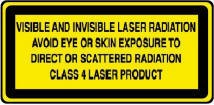
Ramulaser™ 785nm & Ramulaser™ 1064nm
- 785 or 1064nm Raman Laser attaches to Raman-Probe via standard FC/APC connector
- Raman Laser line 0.2nm FWHM
- >499mWatt adjustable power
- Li-ion battery powered in ruggedized metal case
- Miniature size just 2x4x6″
- Add Raman- Probe- 785/1064 and spectrometer
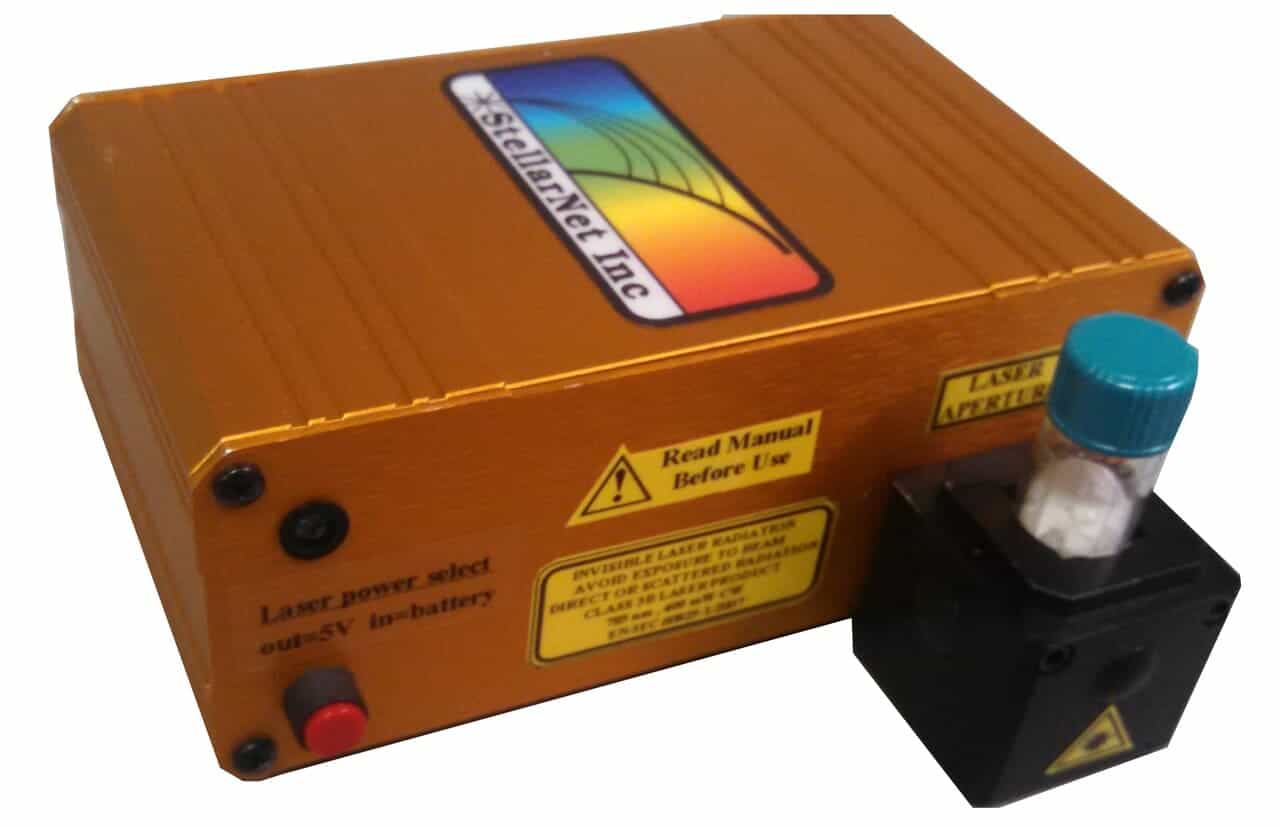
Ramulaser-Vial™
Reduced cost integrated probe
- 785 or 1064nm Raman Laser with direct attach 1/2″ vial holder
- Raman Laser line 0.2nm FWHM
- >499mWatt adjustable power
- Direct attach to spectrometer reduces system cost
- Holds 1/2″ round sample vials- liquids, powders, and solids
- Miniature size just 2x4x6″
- Li-ion Battery powered in Rugged metal case
Raman Laboratory Laser
- Designed for use in the laboratory
- Many Configurable Wavelengths 405, 445, 520, 638, 830, 976nm
- Adjustable Digital Power Control with Touchscreen Interface
- Narrow spectral linewidths
- Plug- and-play with safety switch
How to choose a Raman Laser Wavelength
How do I choose a Raman laser frequency for my Raman spectroscopy application?
A samples Raman signature and the peak position is related to the samples unique chemical structure and is independent of the excitation wavelength, so the molecular fingerprint will be the same regardless of the excitation laser wavelength.
Different laser frequencies provide specific strengths and weaknesses allowing a user to optimize the measurement of different samples by their choice of Raman laser. The three most popular Raman spectrometer wavelengths are 532nm, 785nm and 1064nm.
| 532nm | 785nm* | 1064nm | |
| Raman Efficiency | High | Medium | Low |
| Fluorescence | High | Medium | Low |
| Heat Absorption | Low | Medium | High |
*Most popular system for price and performance
How do I convert Raman wavenumber shift (cm-1) to nanometers (nm)?
Try using our Raman wavenumber shift to nanometer converter. Enter in your laser frequency, wavelength range, and press the conversion buttons!
Technical Information Request
Cooking Oil Spectroscopy for the Perfect Thanksgiving Turkey
Happy Thanksgiving! Every year, we like to analyze popular Thanksgiving foods by using spectroscopy. As we gather around the Thanksgiving table, the spotlight shines on the star of the feast: the perfectly roasted turkey. While the turkey is often center stage, the...

